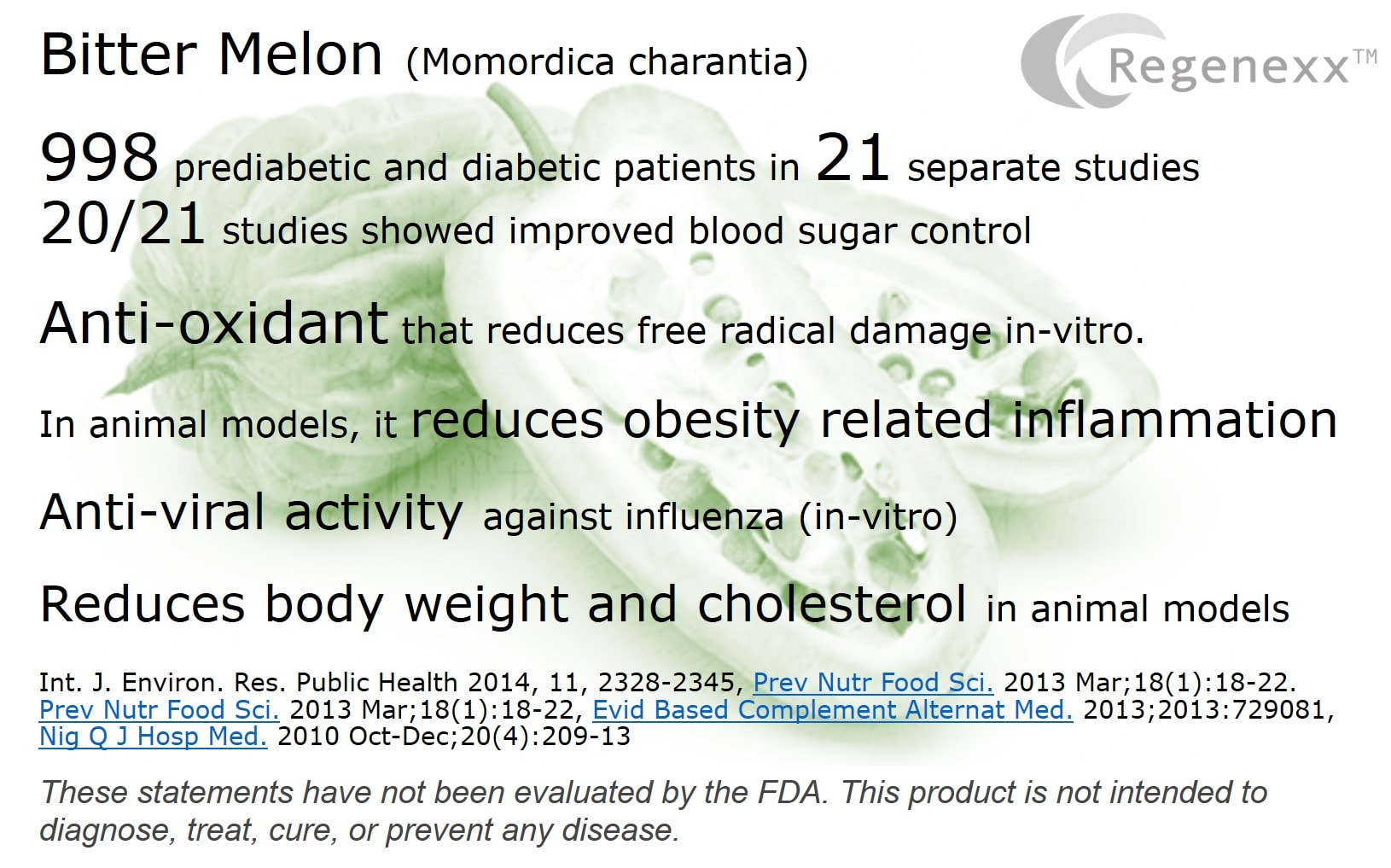What is Bitter Melon? Why Should I Care?
I asked myself, “What is bitter melon?” when one of our lab Ph.D.’s proposed it as part of a supplement that might help stem cells. Could this be a real thing? Was it a regular melon that was just bitter, or something else? While we ultimately picked it from a larger group of supplements we were testing because of its performance with human stem cells, I’ve since learned a lot about this unique natural food.
First, the fancy Latin name for the fruit is Momordica charantia. It’s also called bitter gourd or bitter squash and has many other local names. In Japan it’s called Goya and in India it’s known as aravella. The plant that grows this ugly, bitter, green fruit is a tropical vine widely seen in Asia, Africa, and the Caribbean. It’s originally an import from India and was later introduced into China in the 14th century. This is how it became incorporated into traditional Chinese medicine.
So besides helping stem cells in the lab, what can it do? It turns out, that research has shown some interesting properties for our bitter little gourd. The one that has the most robust clinical trials evidence is blood sugar control. From the infographic above, there have been almost 1,000 patients treated in 21 trials, with 20 of those showing better control over blood glucose levels. Most of these studies were in either pre-diabetics or type 2 diabetics. A handful were well designed studies, with many being lesser quality. Having said that, they all used an objective metric not prone to a placebo effect (i.e. blood glucose levels, HBA1C, glucose tolerance tests, etc…). This is important to us, as patients with poor blood sugar control have poor stem cell function.
In addition, bitter melon has also shown itself to be an anti-oxidant capable in the lab of scavenging free radicals that can damage tissue. In animal models it’s also reduced obesity related inflammation (activated macrophages and monocytes in white and brown fat) as well as reduced weight and cholesterol. Finally, a protein isolated from the original supplement also seems to help cells ward off the flu virus.
The upshot? I now know what bitter melon is, as I take a swig of my Regenexx Advanced Stem Cell Formula every morning. That bitter green fruit is some pretty amazing stuff, not only for helping stem cells perform better in lab experiments, but also in clinical trials for controlling blood sugar!
These statements have not been evaluated by the FDA. This product is not intended to diagnose, treat, cure, or prevent any disease.

If you have questions or comments about this blog post, please email us at [email protected]
NOTE: This blog post provides general information to help the reader better understand regenerative medicine, musculoskeletal health, and related subjects. All content provided in this blog, website, or any linked materials, including text, graphics, images, patient profiles, outcomes, and information, are not intended and should not be considered or used as a substitute for medical advice, diagnosis, or treatment. Please always consult with a professional and certified healthcare provider to discuss if a treatment is right for you.
